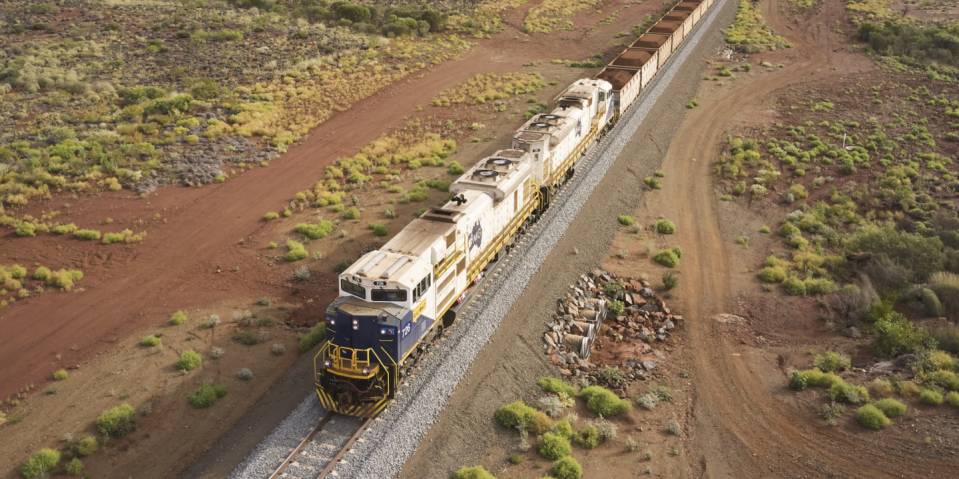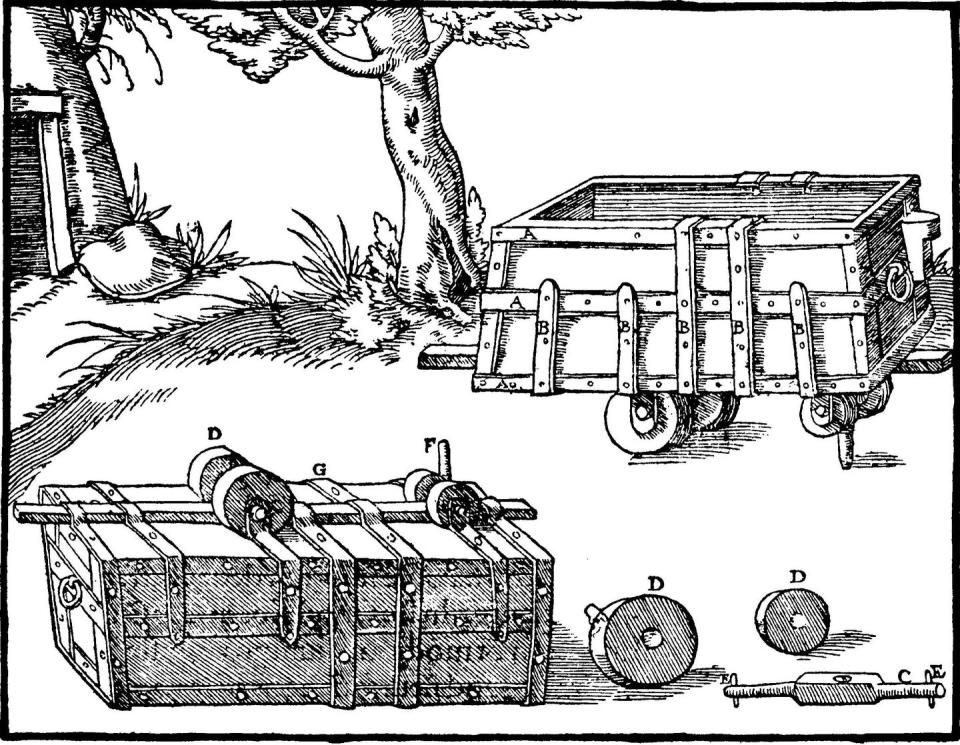This 34,000-Ton ‘Infinity Train’ Will Recharge Itself... With Gravity

An Australian-British partnership will build a renewable energy mine train.
Mine trains date back centuries and have controlled, specific applications.
Australia’s Fortescue bought a British F1 spinoff for their battery prowess.
An Australian mining company says it’s building a huge “Infinity Train” that will charge itself by moving downhill. It’ll carry heavy iron ore in one direction and use that weight and movement to charge the train for its return trip back to the mine.
“The Infinity Train has the capacity to be the world’s most efficient battery electric locomotive,” Fortescue CEO Elizabeth Gaines says in a March 1 press release. “The regeneration of electricity on the downhill loaded sections will remove the need for the installation of renewable energy generation and recharging infrastructure, making it a capital-efficient solution for eliminating diesel and emissions from our rail operations.”
🚊 You love badass machines. So do we. Let’s nerd out over them together.
Fortescue Metals Group, or FMG, is based in Western Australia with headquarters in Perth and enormous property holdings in the north of the state. It’s one of the largest producers of iron ore in the world. (Nearly 80 percent of Western Australia’s population lives in the Perth area, constituting about 8 percent of Australia’s total population; so only about 2 percent of Australia’s population inhabits the rest of the resource-rich state that occupies about 33 percent of the country’s total land area.)
FMG announced the Infinity Train as part of a joint project with recently acquired Williams Advanced Engineering (WAE), the Oxfordshire, England-based commercial arm of a well-known Formula One racing company. WAE builds batteries for electric vehicles, which FMG cites as one of the key reasons for the acquisition, as those batteries will power the Infinity Train. WAE has also worked on related projects, like designing the proprietary high-voltage battery system for a 290-ton hydrogen-powered mining truck, which will reportedly become the world’s largest electric vehicle once complete.
It’s hard to overstate how intertwined railroads and mining operations have become over the centuries. The first primitive rail transport in mines dates back to the 1500s, designed to carry ore, waste stone, and other materials out of the mines, while minimizing how much people had to work to push and control the carts. From there, the mine rail developed for hundreds of years as a specialized offshoot of other kinds of trains.
So how will FMG and WAE’s Infinity Train work? Like other rail transport innovators over the last 500 years, leadership at FMG has recognized that a mine train offers a unique situation that’s well-suited to new technology. That’s because a mine train only has to go back and forth over a relatively short distance, meaning its trips are very predictable, well-controlled, and use a specified amount of power every single time as long as the weight is about the same. It’s not like a passenger or freight train designed for use around the world.

The company’s founder, Andrew Forrest, cites gravitational energy as one piece of a global move away from fossil fuels and toward other sources of energy. That’s how the Infinity Train will work: the fully loaded 34,000-ton train will move slightly downhill on its own, and store this kinetic energy in batteries that will power the much lighter, emptied trains back up the incline to the mines. Forrest says the new train will also lower operating costs.
FMG says its current fleet has 16 total train sets that are each nearly two miles long with a capacity of over 34,000 tons each, per the press release. The trains use diesel and account for 11 percent of Fortescue’s total direct (or Scope 1) emissions. FMG’s stated public goal is to eliminate diesel from their operations and fully decarbonize by 2030. The Infinity Train is a key part of that plan.
You Might Also Like
